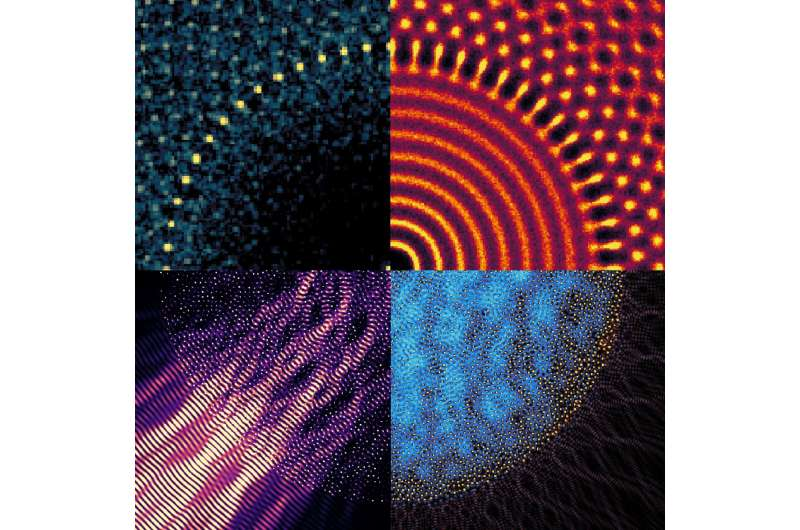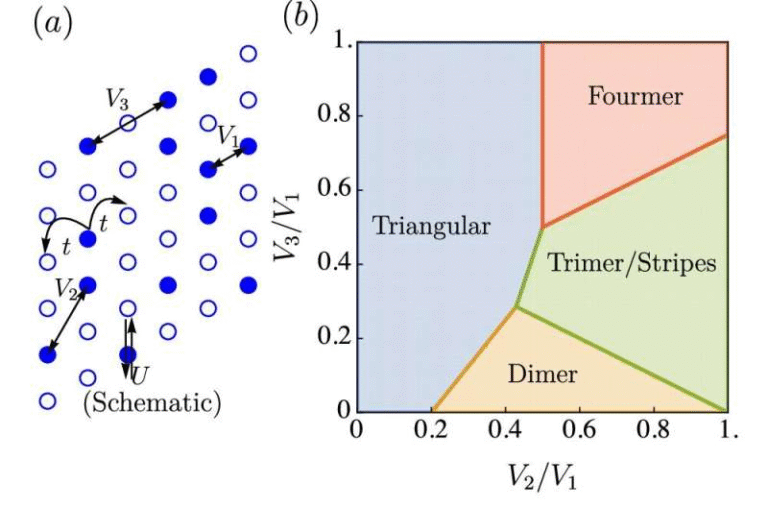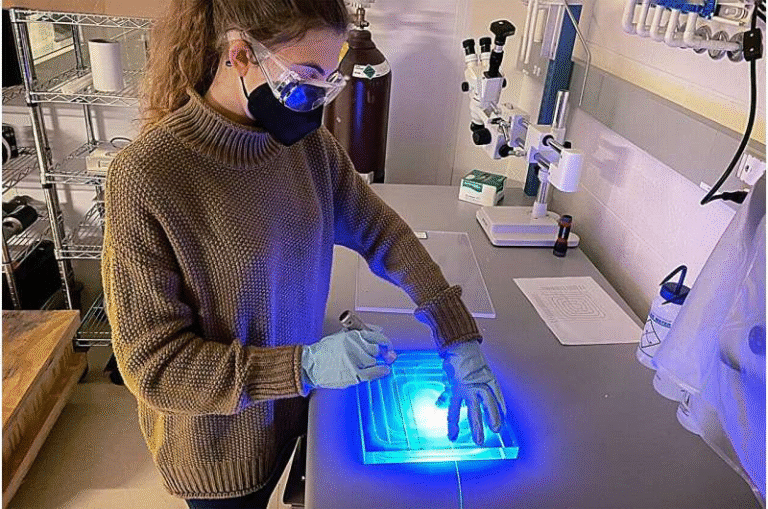NYU Scientists Develop Gyromorphs to Boost the Future of Light-Based Computing

Light-based computing has been drawing attention for years, thanks to its promise of running faster and using far less energy than today’s electronic computers. Instead of moving electrons through circuits, these systems use photons—tiny packets of light—to process and store information. But one major problem has been holding this technology back: controlling microscopic light signals on a chip without losing power. For that, engineers need a special kind of material that can block stray light coming from every direction, something known as an isotropic bandgap material.
A team of researchers at New York University now claims to have found a breakthrough. They’ve discovered a new class of materials called gyromorphs, which combine characteristics of both liquids and crystals in a way scientists previously thought was impossible. And according to their results, gyromorphs outperform every known structure when it comes to stopping light from leaking into unwanted paths on a chip.
Below is a clear, detailed breakdown of what gyromorphs are, how they work, why they matter, and what this discovery could mean for the future of computing and materials science.
Understanding the Challenge of Light-Based Computing
Light-based computing, or photonic computing, promises remarkable advantages over traditional electronics. Because photons travel faster and don’t generate the heat that electrons do, photonic computers could theoretically achieve massive speed improvements while consuming significantly less energy. This has big implications not just for consumer devices, but also for large-scale systems like data centers and AI supercomputers.
However, the difficulty has always been rerouting and controlling light on a chip with minimal energy loss. Light naturally wants to scatter—reflect, refract, and escape in unexpected directions. Even tiny losses can interfere with signal strength, computing accuracy, and overall system efficiency.
To prevent this, chips need materials capable of blocking or redirecting stray photons from all possible angles. These materials must be lightweight, stable, and able to maintain what scientists call an isotropic photonic bandgap, which means lightwaves simply can’t pass through them.
Achieving this has been extremely difficult. Many materials work well in some directions, but not others.
Why Quasicrystals Weren’t Enough
In the past, researchers experimented with quasicrystals—structures that have mathematical order but don’t repeat like traditional crystals. Quasicrystals can block light very well, but they do it unevenly. Scientists ran into a trade-off:
- If they tuned quasicrystals to completely block light, they only did so from certain directions.
- If they tuned them to work in all directions, they didn’t block strongly enough.
This left photonics researchers stuck in a frustrating middle ground, searching for a different kind of material that didn’t force the same compromises.
The Discovery of Gyromorphs
The NYU team—led by physicist Stefano Martiniani, with postdoctoral researcher Mathias Casiulis as the lead author—decided to explore a different direction. They used algorithms to design engineered metamaterials, which are materials whose properties depend more on their structure than their chemical composition.
During this process, they stumbled upon something unexpected: a form of correlated disorder. The structures they generated were neither random nor perfectly ordered. They fell somewhere in between, in a configuration that scientists previously didn’t think would lead to functional optical materials.
This structure became known as a gyromorph.
A gyromorph behaves like a liquid when viewed up close—the particles don’t align in a rigid, repeating lattice. But when observed at a distance, patterns appear that resemble the long-range symmetry of crystals.
This combination of liquid-like flexibility and crystal-like order gives gyromorphs their unique optical abilities.
How Gyromorphs Block Light From All Directions
One of the most important findings of the study is that all effective isotropic bandgap materials share a particular structural signature. The researchers used this insight to intensify that signature through algorithmic design.
The result was a material with:
- No repeating atomic pattern (crystal-like periodicity is absent).
- Liquid-style randomness on small scales.
- Strong, consistent symmetry when viewed macroscopically.
These combined properties produce bandgaps that prevent lightwaves from penetrating the material from any direction.
The researchers confirmed these properties through simulations and evaluations of structure factors, pair-correlation functions, and density-of-states behavior. They even demonstrated that polarized light beams hitting a gyromorph can be fully reflected, indicating strong optical control.
Why This Discovery Matters
Gyromorphs could potentially solve one of the hardest problems in photonics: controlling light in dense, complex environments, like inside a computer chip.
Here’s why that matters:
1. Improved Signal Strength
If stray photons can be blocked more effectively, photonic circuits can maintain cleaner, stronger signals.
2. Higher Energy Efficiency
Less signal loss means fewer corrections, less amplification, and less energy waste.
3. Faster Data Processing
Better-controlled light paths lead to more predictable and faster routing of information.
4. New Possibilities in Metamaterials
Gyromorphs use structure—not chemistry—to determine their optical properties. This opens the door to a whole new era of metamaterial design.
5. Potential Beyond Computing
While photonic computing is the immediate application, gyromorphs could impact:
- advanced sensors
- imaging technologies
- optical communication systems
- lenses and waveguides
- quantum computing
- laser shielding
- light-filtering devices
Anywhere light control matters, gyromorphs could play a role.
How Gyromorphs Were Created
The researchers used computational algorithms capable of designing disordered yet functional structures. These algorithms searched for patterns that matched the optical requirements of an isotropic bandgap while also being physically stable.
They discovered that the best candidates:
- were disordered like liquids,
- had long-range orientational symmetry like crystals,
- and used correlated spacing similar to natural systems (such as trees that maintain certain distances from one another).
The team also noticed that gyromorphs consistently formed this hybrid structural signature, which helped confirm the discovery as a new class of material rather than a one-off result.
Adding More Context: Why Bandgap Materials Matter
Bandgap materials are important across many fields of physics. For instance:
Photonic Bandgaps
These prevent light of certain wavelengths from passing through. They’re essential in lasers, fiber optics, and photonic crystals.
Electronic Bandgaps
These determine whether a material behaves as a conductor, semiconductor, or insulator. All modern electronics rely on them.
Gyromorphs contribute specifically to the realm of photonic bandgaps. Their ability to create isotropic bandgaps makes them valuable for any future technology that depends on directing light reliably.
What Comes Next?
The study primarily focuses on the computational discovery of gyromorphs. Future steps include:
- fabricating gyromorphs in physical form,
- testing them in real photonic chips,
- exploring how well they scale in manufacturing,
- and determining how they interact with other materials.
If these real-world tests confirm the simulations, gyromorphs could become a cornerstone of next-generation optical computing systems.





